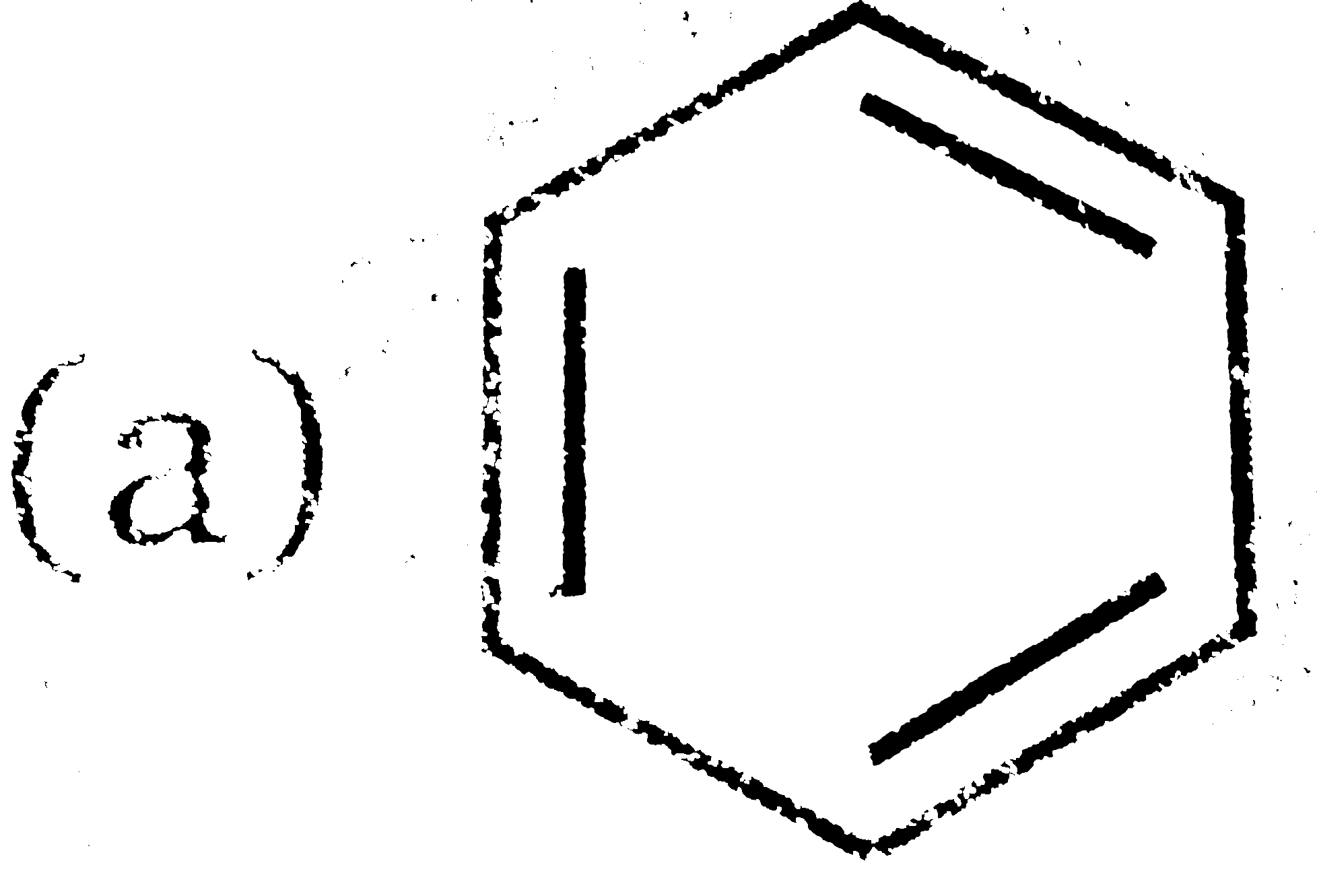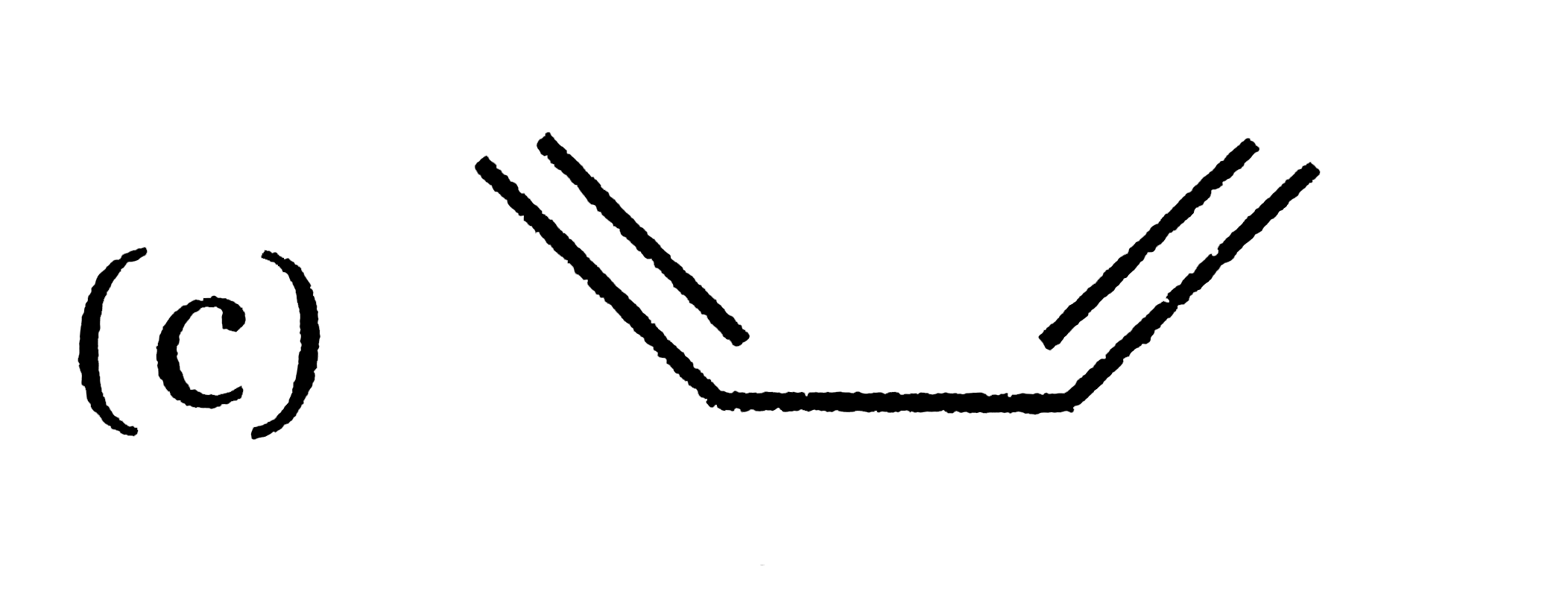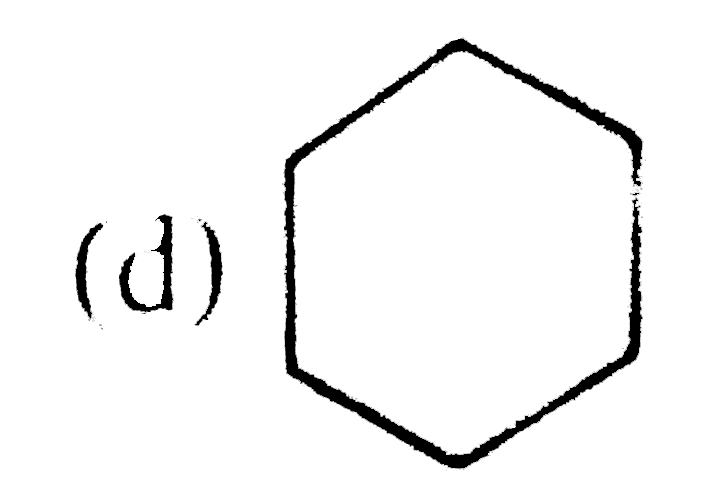An alkyl halide reacts with a group 14 element, 'Y' at 570 K with Cu as a catalyst producing a dialkyl chloro compound 'Z'. The compound 'Z' on hydrolysis gives another compound which is a strong water repellent and quite inert chemically. The dioxide of 'Y' is acidic in nature. The alkyl halide can also be obtained from methan after mono-substitution. The comp 'Y' and 'Z' are
C,C2H4Cl2
Sn,(CH3)2SnCl2
Si,(C2H5)2SiCl2
Si,(CH3)2SiCl2
The correct Answer is:D
Since the alkyl halide is obtained from CH4 after monosubstitution it must be CH3Cl or CH3Br or CH3I or CH3F. However, this alkyl halide reacts compound. Hence alkyl halid is CH3Cl. Also Y can be either C or Si since it gives an acidic dioxide. But the hydrolysis of Z (produced from Y) gives a water repellant and chemically inert compound. it must be a polymeric compound, that too of Si, i.e., silicone. carbon cannot give such a polymeric compound. hence Y is si. the reaction involved by
2CH3Cl+Si(Y)Cu.570K−−−−→(CH3)2SiCl2(Z)
(CH3)2SiCl2+H2O−−−→−HCl−O−CH3∣Si∣CH3−O−CH3∣Si∣CH3−O−CH3∣Si∣CH3−O−
Topper's Solved these Questions
- BOOK - DINESH PUBLICATIONCHAPTER - THE CARBON FAMILYEXERCISE - RQ102videos
THE CARBON FAMILY
- BOOK - DINESH PUBLICATIONCHAPTER - THE CARBON FAMILYEXERCISE - Selected straight31videos
THE CARBON FAMILY
- BOOK - DINESH PUBLICATIONCHAPTER - SURFACE CHEMISTRY EXERCISE - BRAIN STORMING MULTIPLE CHOICE QUESTIONS (MCQs)8videos
SURFACE CHEMISTRY
- BOOK - DINESH PUBLICATIONCHAPTER - THE HALOGEN FAMILYEXERCISE - ULTIMATE PREPARATORY PACKAGE16videos
THE HALOGEN FAMILY
Similar Questions
A compound 'X' containing C, H and O is unreactive towards sodium. It does not add with bromine. It also does not react with Schiff's reagent. On refluxing with an excess of HI, 'X' yields only one oragnic product 'Y'.'Y' on hydrolysis yield a new compound 'Z' which can be converted into 'Y' by reaction with red phosphorus and iodine. the compound 'Z' on oxidation with potassium permanganate gives a carboxylic acid. The equivalent weight of acid is 60. What are the compounds 'X','Y' and 'Z'? Write chemical equations leading to the conversion of 'X' to 'Y'.
View SolutionAn oxide of a bivalent metal on heating with coke gives a compound 'X' and a gas 'Y'. The gas 'Y' reacts with chlorine gas to give a poisonous gaseous compound. 'X' undergoes hydrolysis to give a hydrocarbons 'Z' with two carbon atoms. Identify the compound X,Y, and Z. Also give the reactions involved.
View Solution
Knowledge Check
- Question 1 - Select One
A compound X formed after heating coke with lime react with water to give Y which on passing over redhot iron at 873 produces Z. The compound Z is
A B
B C
C D
D
- Question 2 - Select One
Silica reacts with hydride of superhalogen to form 'X'. On hydrolysis of 'X' another compound 'Y' is formed. 'Y' on heating at 10000C loses water to form 'Z'. The 'Z' can also be prepared in the following reaction.
ASiO2+4HF→SiF4+2H2OBSi+O2→SiO2CK2SiF6+4K→6KF+SiDSi+2NaOH+H2O→Na2SiO3+2H2 - Question 3 - Select One
Aniline is treated with NaNO2/HCl at 0∘C to give compound X which on treatment with cuprous cyanide gives another compound Y. When compound Y is treated with H2/Ni compound Z is obtained. The compound Z is
ABenzyl alcoholBBenzylamineCN-ethylanilineDPhenol
A compound 'X' containing C, H and O is unreactive towards sodium. It does not add with bromine. It also does not react with Schiff's reagent. On refluxing with an excess of HI, 'X' yields only one oragnic product 'Y'.'Y' on hydrolysis yield a new compound 'Z' which can be converted into 'Y' by reaction with red phosphorus and iodine. the compound 'Z' on oxidation with potassium permanganate gives a carboxylic acid. The equivalent weight of acid is 60. What are the compounds 'X','Y' and 'Z'? Write chemical equations leading to the conversion of 'X' to 'Y'.
View SolutionA white solid X on heating gives a white solid Y and an acidic gas Z. Gas Z is also given out when X reacts with an acid. The compound Y is also formed if caustic soda is left open in the atmosphere. X, Y and Z are
View SolutionA hydrocarbon (X) of the formula C6H12 does not react with bromine water but reacts with bromine in presence of light, forming compound (Y).Compound (Y) on treatment with Alc. KOH gives compound (Z) which on ozonolysis gives (T) reduces Tollens reagent which gives compound (W) after acidification . (W) gives iodoform test and after acidification produce compound (U) which when heated with P2O5 forms a cyclic anhydride (V).
Compound W isView SolutionA hydrocarbon (X) of the formula C6H12 does not react with bromine water but reacts with bromine in presence of light, forming compound (Y).Compound (Y) on treatment with Alc. KOH gives compound (Z) which on ozonolysis gives (T) reduces Tollens reagent which gives compound (W) after acidification . (W) gives iodoform test and after acidification produce compound (U) which when heated with P2O5 forms a cyclic anhydride (V).
Compound V isView SolutionA hydrocarbon (X) of the formula C6H12 does not react with bromine water but reacts with bromine in presence of light, forming compound (Y).Compound (Y) on treatment with Alc. KOH gives compound (Z) which on ozonolysis gives (T) reduces Tollens reagent which gives compound (W) after acidification . (W) gives iodoform test and after acidification produce compound (U) which when heated with P2O5 forms a cyclic anhydride (V).
Compound 'x' isView Solution

